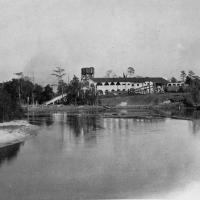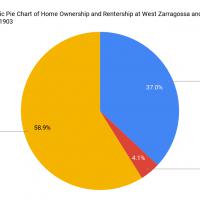Ezra Gerry spent his entire life near the sea. As a young, African American man at the turn-of-the-century, it was not surprising that he ended up working at Pensacola’s docks. By the early 1900s, Pensacola went through many major developments that transformed the landscape and texture of the city. Ezra was both part of and witness to many of these transformations: the expanding railroad and port networks, the rising tensions of race relations, and the steady boom of Pensacola’s economy.
Ezra represents one aspect of life in Pensacola, one that has been shrouded in historic silences. This website explores the stories that have been buried in historical archives about Ezra, his family, and his community. Largely forgotten, but not lost, these stories are told through five exhibits that trace the public stories of Pensacola’s African American communities, of life in maritime trade, and of the way information spreads, as well as the private stories of stability thorough home and family. As a young, working-class, African American man, Ezra Gerry represents the forgotten lives and experiences of African Americans at the turn-of-the-century in Pensacola, Florida.
The Ezra Gerry Museum website is a digital companion to the upcoming museum, the Ezra Gerry Museum and Research Center by the Kukua Institute. Set to open in late 2019, the Museum and Research Center aims to provide a place where art, history, science, and technology converge. The Museum’s online repository hopes to give voice to the historic silences by collecting and sharing stories from this time and place.
Featured
Recently Added Items
View of The Southern States Lumber Co. from the water. The saw mill was located in Muscogee, Florida
This table shows the racial demogarphic data for Ezra Gerry's neighborhood blocks at West Zaragossa and West Wright Streets. The "Overall Results"…
This pie chart shows the overall racial demographic of the homeowners and renters at two of Ezra Gerry's neighborhood blocks between 1900 and 1903.…

 Photograph of a Saw Mill at Muscogee
Photograph of a Saw Mill at Muscogee Racial Demographic Table of Home Ownership and Rentership at West Zarragossa and West Wright Streets, 1900 and 1903
Racial Demographic Table of Home Ownership and Rentership at West Zarragossa and West Wright Streets, 1900 and 1903 Racial Demographic Pie Chart of Home Ownership and Rentership at West Zarragossa and West Wright Streets, 1900 and 1903
Racial Demographic Pie Chart of Home Ownership and Rentership at West Zarragossa and West Wright Streets, 1900 and 1903